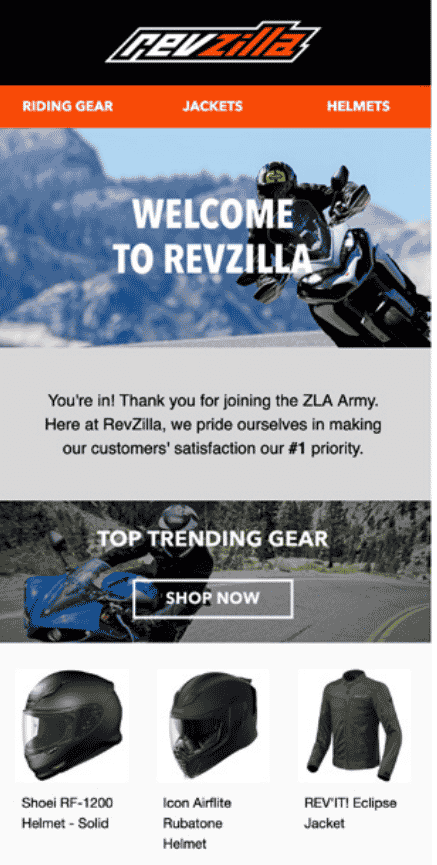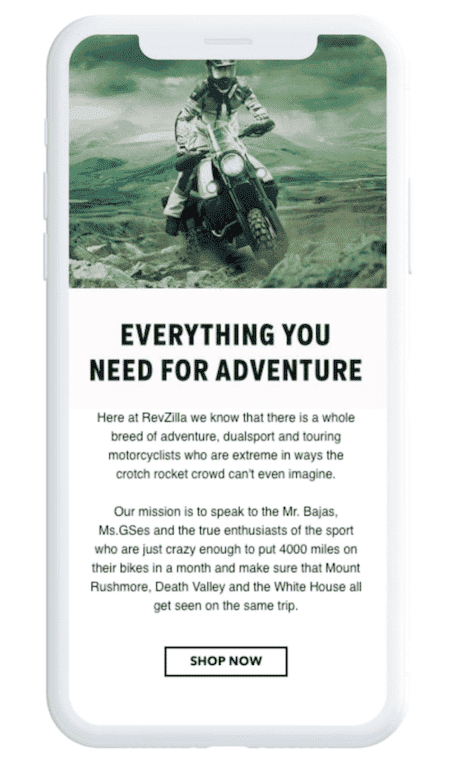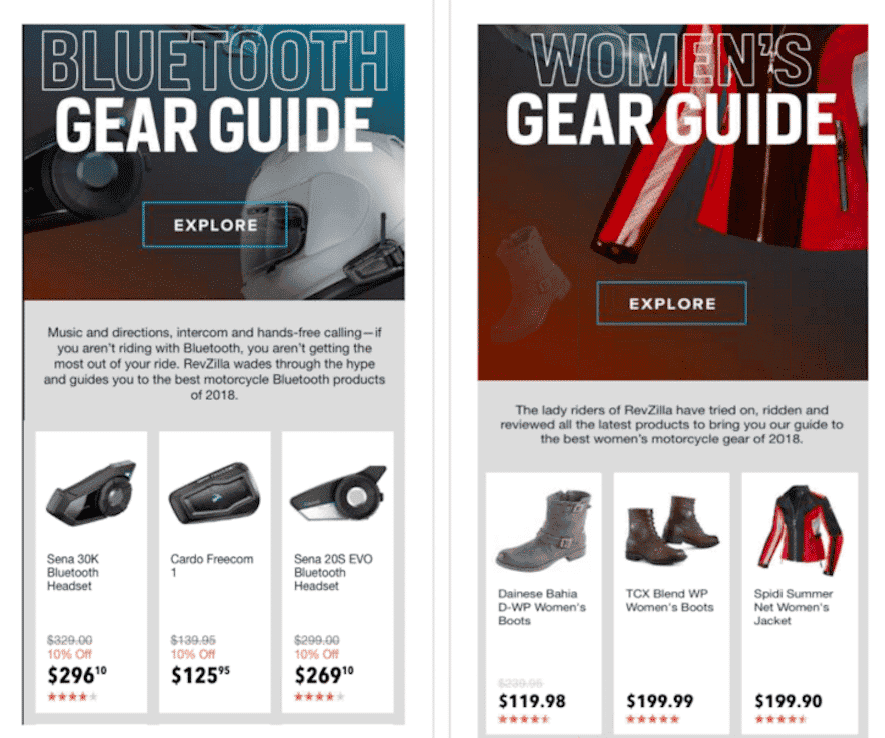Product & Customers
How RevZilla Evolved Its Email Marketing Beyond Batch‑and‑Blast
January 24, 2019

When a customer signs up for your email or opts into your push notifications, they’re sending you a message: They want to hear from you. A welcome series is a natural response, but it conveys far more than simply saying hi. Welcome emails are an important step in the customer lifecycle. They set a strong foundation for what will (hopefully) be a long and profitable relationship. Many brands struggle with transitioning to a lifecycle-centric email marketing program. Motorcycle gear retailer RevZilla is not one of them.
RevZilla’s email marketing mix was traditionally 80% campaign sends and 20% triggered messages. However, the latter produced 84% more revenue per thousand users. That prompted RevZilla to go beyond batch-and-blast and master triggered messages.
RevZilla went beyond a simple three-part welcome series to a true welcome lifecycle. At the same time, the brand also introduced robust post-purchase, browse abandonment and product interest flows to the mix. And every consumer receives different versions, depending on their specific user behavior, such as interest and purchases. For example, their riding style, whether that’s adventure, sport, track racing or cruising.

“We’re not just focusing on the who, but the when,” explains Andrew Lim, RevZilla’s Senior Manager of Email & Personalization. “When someone expresses interest in a product type or brand, what are the trigger points in that customer journey?”
How did RevZilla do it?
The brand’s initial welcome series was personalized based on the type of bike a consumer owns. However, there was no real cause-and-effect, as all customers would then be moved onto a generic batch-and-blast email list.
Recognizing the missed opportunity there, RevZilla signed on as a beta tester of Marigold Engage by Sailthru’s Lifecycle Optimizer, which automates individualized messages using insights and predictions from people’s customer profiles. Those profiles — not to mention lots of testing — helped the brand make email streams far more tailored.

“We have deep category pages so if someone clicks on Harley-Davidson exhaust products, that tells us a ton about them,” says Andrew. “Without filling out a profile, they told us they might own a Harley and they might be looking for parts. They’re also not allergic to a higher price point. We have enough ammo to create an LO flow that tailors messaging to these people.”
Betting on Browse Abandonment
Another bit of data that RevZilla uses to personalize messaging is browsing history. As of January 2019, there were 22 different browse abandonment flows, all of which are easy to implement; JavaScript does the heavy lifting. They’re also effective, generating 50% higher average order values than other triggers, as well as 30% higher revenue per thousand users.

“If someone clicked on a category on Black Friday, we sent them an email that referenced that click the next day. We showed them a personalized feed of products based on that category or brand,” says Andrew. “It gave us a way to know we were canvassing when we needed to be canvassing, but in a way that was sophisticated enough to know that we weren’t pressing the send button one million times and hoping for the best. Customers got highly personalized, segmented emails that we hoped would convert at a higher level.”
In the meantime, if you’re a Sailthru customer and want to learn more about Lifecycle Optimizer, please reach out to your Customer Success Manager. If you haven’t worked with us before, click here for a demo.
The State of Brand Loyalty in the U.S. in 2023
Related



